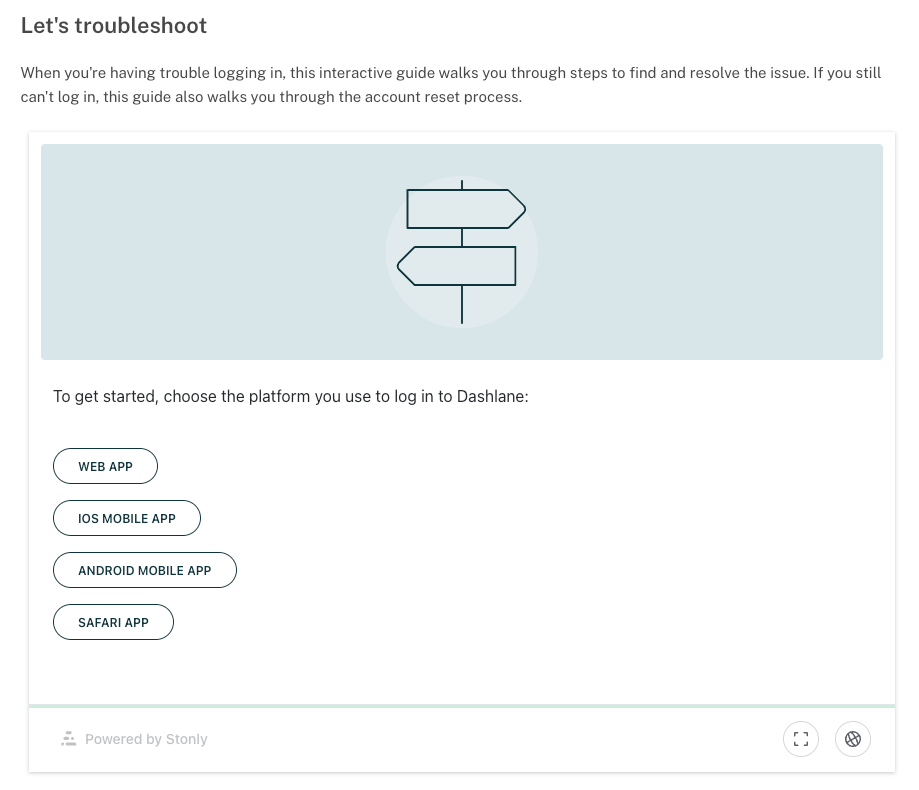Help centers are a common self-serve support channel, but are they still effective?
Customer bases are broader than ever, and their products are getting more complex, which means their use cases are getting more diverse. But still, customers expect their help center articles to provide immediate, personalized resolutions. If submitting a ticket feels easier, that’s what customers will do.
If your top help center articles aren’t quickly guiding customers to the right resolution for their situation, they’re probably driving more ticket volume than they should be. Ineffective help center articles are often:
1. Hard to find: It could be that you’re using the wrong language, so your customers can’t find the article in your help center or Google search results. Or there might be too many articles in your help center, and your customers aren’t willing to dig to find the one they’re looking for.
Related webinar: How to Turbocharge Zendesk for Customer Support Teams
2. Overwhelming: Writers can’t personalize help center articles, so they tend to be written as if one size fits all. In an attempt to be thorough, your documentation team packs in all the information available on a given topic, just in case it’s someday relevant to a customer. It’s a nice thought, but it makes it much harder for customers to get answers to specific questions.

3. Too vague or missing details: Some support teams take a different approach. You know long articles are overwhelming, so eliminate as much info as possible. Unfortunately, this often increases the likelihood that a given article won’t have the information a customer needs.
4. Not engaging: How engaging any piece of content is depends on many factors. Companies often self-impose limitations, such as requiring articles to be text-only so they’re easy to maintain. Some companies need the marketing team to draft help center content since it’s publicly available to customers and prospects. Whatever the reason, many help center articles fall flat and aren’t tailored to their customer’s preferences or needs.
5. Hard to measure and improve: Most knowledge base software provides basic reporting, but almost none of them measure the granular details that can help you improve your self-serve support. It’s hard to track factors like where customers get stuck or how many customers create a ticket after reading an article. You might try to estimate those numbers by tracking bounce rates or article views, but none give you the information you need to improve the article itself.
In short, companies spend a ton of energy on help center articles that aren’t performing. This is especially true for your top issues—the ones that drive a ton of support tickets, but you know can be solved without human contact.
The costs of bad help center articles
When your top help center articles don’t perform, it causes consequences on multiple fronts.
A negative customer experience
Poor-performing articles negatively affect your customer experience.
When customers try to self-serve and fail, it reflects poorly on you. Customers are often engaged when they attempt to self-serve. They’re hopeful that their issue will be simple to solve and that they’ll quickly find a workable solution. But what if they spend a ton of time searching only to find nothing? They get frustrated and disillusioned. And what’s the likelihood they’ll look for answers in your knowledge base next time? Slim to none.
It’s hard to put a monetary value on trust. No one enjoys sifting through multiple articles when they experience a problem with a product. Each article a customer looks at gives them a sense of hope, only to have their hopes dashed if it doesn’t meet their needs. When this happens repeatedly, your customers lose trust in your ability to help them.
A negative impact on your support metrics
Help center articles that don’t perform also hurt your support organization, creating additional costs for your company. Some of these are tangible monetary costs, while others are less tangible but still undeniable.
Most companies invest in self-serve support because—when it works—it’s significantly more cost effective than solving the same issues via human support. But since many companies get self-serve support wrong by relying solely on help center articles, they cost themselves even more.
These costs show up in things like:
- Higher ticket volume. Every company hopes that self-service will deflect tickets. When your help articles for top issues don’t work well, your ticket deflection suffers, and your support team gets more work piled on their plates.
- An increased cost per ticket. When your help articles don’t work, you’re spending money on self-service tools and increased support staffing to accommodate the additional ticket volume.
- A longer mean time to resolution and response time. With more tickets in the queue, your support team takes longer to respond to customers and resolve their issues. The costs will appear in key business metrics like churn if this gets bad enough.

Watch this webinar to learn how to improve your help center this month for faster customer resolutions and lower ticket volume.
A negative impact on your support team
Last but not least, poorly-performing help center articles hurt the humans on your support team. Your support team is under more stress from the increases in ticket volume and unhappy customers. Failing to solve simple issues with self-serve support also risks melting your support team’s brains.
40% of the tickets customer service leaders receive are mind-numbing and repetitive, according to DigitalGenius.
Dealing with simple, repetitive tickets day after day can make customer support a soul-sucking job.
Fortunately, there’s a better way.
Transform your help center articles with interactive guides
The best way to take your help articles to the next level is to replace them with interactive guides.
Stonly helps you overcome all the disadvantages of a traditional help center article. Here’s how:
- They’re easy to find. You can provide interactive guides directly into your product at exactly the point where your customers are most likely to need them. Customers don’t have to leave the page or open a new tab. Searchability is no longer an issue because your customers don’t even need to search for them.
- You can personalize the content. Rather than guessing at the right level of detail to include, you can divide the content of interactive guides into different paths relevant to different customers. Customers dictate the path they take. As your customers interact with the guide, it automatically takes them to the next step, which only includes relevant information.
- They’re engaging. Rather than opening a static page of text and scrolling down through it, interactive support guides show you one step at a time—making them easier to follow through to a solution. And you can embed images, videos, and GIFs to make things more engaging.
- They’re easy to measure. Gone are the days of bounce rate or time spent on the page—the traditional metrics of a help center. Stonly guides show how people consume your content, what paths they follow, and where they drop off.
Example: Dashlane
Before adding interactive guides, Dashlane, the global password manager app, had help center articles that “looked like a 5-page manual!” and scared even more people into contacting support. Dashlane needed a way to improve efficiency by resolving—not just deflecting—the issues that caused the biggest ticket volume.
Dashlane reduced ticket volume for their high-volume issues by 25% using expertly-crafted Stonly guides.
They chose Stonly’s self-serve support platform to publish step-by-step guides right inside their Zendesk help center and transform the format of their help center articles from long articles to resolution-focused guides.

And as a bonus, when customers need additional help after experiencing a guide, first touch resolution went up 15% for those customers, making each guide doubly successful and keeping Dashlane the leader in customer service.
See how we could improve your help center articles with Stonly guides just like Dashlane did.
How to create powerful Stonly guides
Creating a guide is a similar process to writing a help center article. Here’s a targeted approach to get you started.
The bare bones of the content should be quite similar. The main difference is in separating the content into different paths so you can display only the relevant information to a customer.
- Start with a question. The more specific the question is, the easier it will be to create highly relevant content. You want to make it easy for your customers to understand the guide, so start small and simple.
- Offer different paths. There’s likely some variation in how customers will reach the solution. Sketch out their various available possibilities to create personalized options for them.
- Break the solution into steps. No one enjoys reading walls of text. The easiest way to make information digestible is to break it down into step-by-step instructions.
- Include plenty of visuals. “A picture speaks a thousand words” is a famous saying for a reason. While it’s good to write the content as though the text instructions are standalone for accessibility reasons, images often make it easier for your customers to follow along.
- Design an easy handoff to your support. Your guides won’t solve every single issue, especially at first. Creating more complex guides takes time and practice. Yet even in those instances, you can still use guides to collect relevant information to help your agents guide customers to a faster resolution. Always make it easy for customers to get in touch with human support—this reduces frustration and makes for a far more positive experience.
Leverage Stonly guides where and when customers need help
The trick to getting self-serve support right is to make it the most convenient option.
Decrease the effort you require from your customers. Make self-service easier for them. The best way to do this is to make your interactive guides available where and when issues happen.
With Stonly, you can use timed prompts to remind customers that help is available wherever they are: in your help center, on your website, in your app, and even on your contact form.
You can integrate your help guides into your contact form, giving customers helpful suggestions before they contact you. Explore your existing setup and customer journeys, and you’ll probably find many other ways to integrate guides into where your customers are already spending their time.

If answers are easy to find and understand and they actually solve problems, your customers will use them.
Take your help center articles to the next level
Help articles have been the standard self-serve support option for a long time. But they aren’t enough. There are more innovative ways to level up your help documentation and to better meet evolving customer expectations.
Don’t just settle for poorly performing help center articles. Stonly has helped 1000+ companies offer world-class self-serve support that customers love. Get a free consultation to see how we could improve your top help center articles with Stonly guides.

